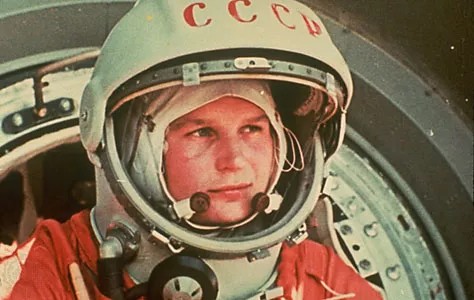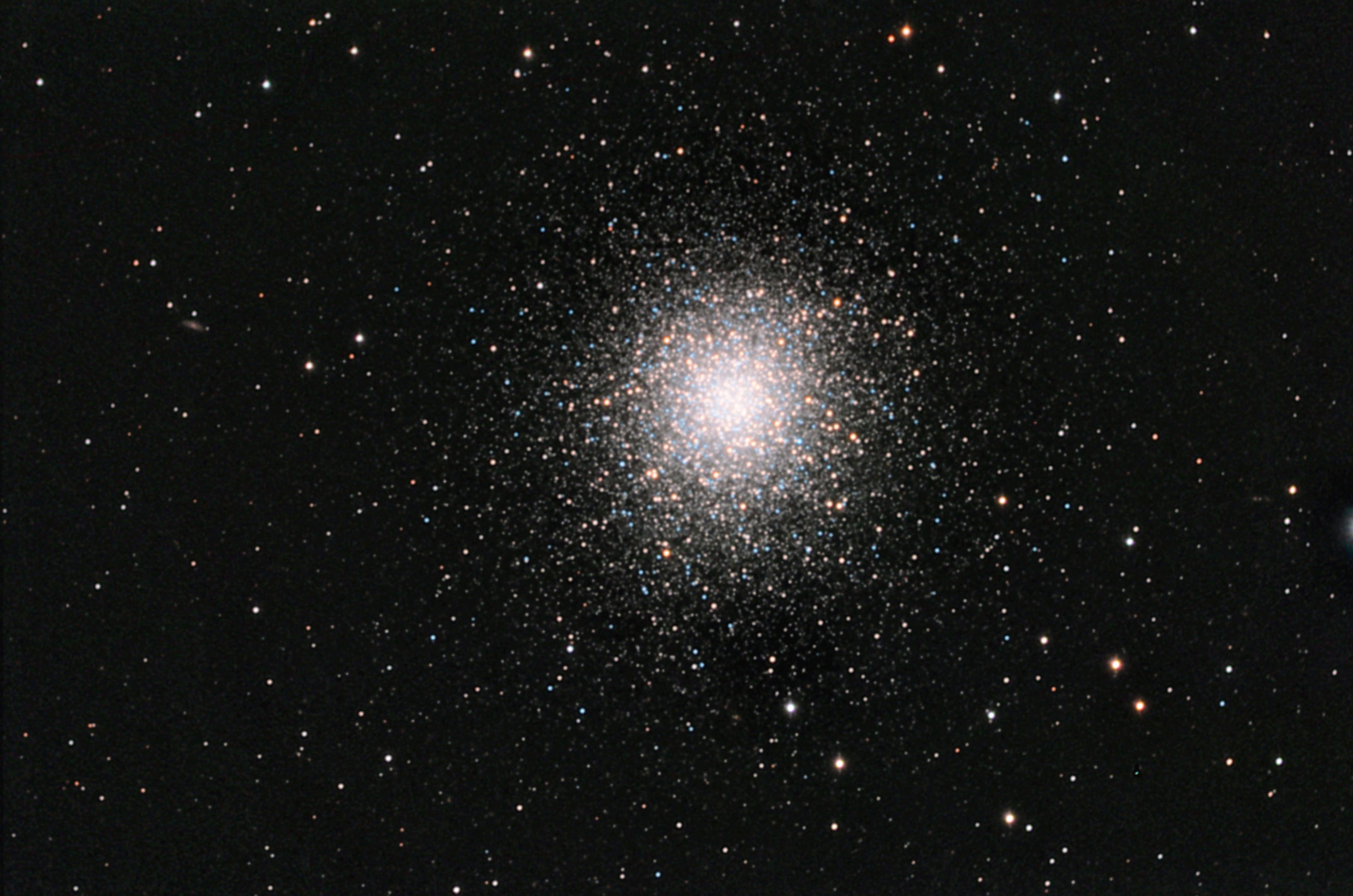60 Years Ago Today – Valentina Tereshkova is the First Woman in Space

Valentina Tereshkova was born in Maslennikovo, near Yaroslavl, in Russia on March 6, 1937. Her father was a tractor driver and her mother worked in a textile factory. Interested in parachuting from a young age, Tereshkova began skydiving at a local flying club, making her first jump at the age of 22. At the time of her selection as a cosmonaut, she was working as a textile worker in a local factory. After the first human spaceflight by Yuri Gagarin, the selection of female cosmonaut trainees was authorized by the Soviet government, with the aim of ensuring the first woman in space was a Soviet citizen. On February 16, 1962, out of more than 400 applicants, five women were selected to join the cosmonaut corps. The group spent several months in training, which included weightless flights, isolation tests, centrifuge tests, 120 parachute jumps, and pilot training in jet aircraft. Five candidates passed the final examinations in November 1962, after which they were commissioned as lieutenants in the Soviet air force (meaning Tereshkova also became the first civilian to fly in space, since technically these were only honorary ranks). On the morning of June 16, 1963, Vostok 6 lifted off without fault and at age 26, Tereshkova became the first woman in space. (Image Credit: RKK Energiya)
60 Years Ago Today – Valentina Tereshkova is the First Woman in Space
Soon after the dawn of the Space Age, when the Soviet Union and the United States began plans for launching people into space, the question of just exactly who those people should be arose. It was assumed that the stresses of spaceflight would require individuals already accustomed to that kind of work – familiar with advanced technology, high accelerations, quick reaction time, cool headed under pressure. Both countries decided that the best qualified people for space flight would be military pilots. In the late 1950s and early 1960s, military pilots were exclusively male, so the first groups selected for spaceflight, 20 in the Soviet Union and 7 in the United States, were comprised of the "cream of the crop" among their military pilots. But many asked: could women also survive the stresses of spaceflight?
After the successful flight of Yuri Gagarin, the first human in space in April 1961, Soviet Chief Designer Sergey Korolyov had the idea of flying a woman in space. To find a suitable candidate, he looked outside the field of military pilots. Although piloting was not a requirement for the female candidates (the Vostok spaceship was more or less automated), parachuting was, especially because after reentry Vostok cosmonauts ejected from the capsule and parachuted to the ground separately. About 400 female candidates initially were screened and 40 were called to Moscow to undergo interviews, medical tests, and other tests in January 1962. Valentina Tereshkova was one of five women selected on Feb. 16, 1962. The other four, whose names were kept secret until 1987, were Tatyana Kuznetsova, Valentina Ponomaryova, Irina Solovyova, and Zhanna Yorkina.
Tereshkova was born in Maslennikovo, a village in the Yaroslavl region of Russia, on March 6, 1937. She had relatively little formal education, finishing school by correspondence. From a young age, she was interested in parachuting and joined a local aeroclub, making her first jump in 1959 at age 22. She was working in a textile factory when her parachuting skills brought her to the attention of Soviet space officials who were recruiting women to be cosmonauts. Although some of the other female candidates were more technically skilled, Tereshkova appeared to be more “politically” fit: her father died during World War II and she best fit the image of a Soviet proletariat.
In May 1962, a Soviet space delegation visited the United States and left with the mistaken impression that America was selecting female astronauts and that one of them would be flying very soon. Not to be upstaged, the Soviets put a plan in place to fly not one but two women on separate Vostok capsules as early as late 1962, with Ponomaryova and Tereshkova as the leading candidates. As it happened, delays ensued and the plan was changed to fly only one woman with a male cosmonaut in the other capsule. Soviet Prime Minister Nikita Khrushchev himself made the final selection, choosing Tereshkova, with Solovyova as first backup and Ponomaryova as second backup. On June 14, 1963, Vostok 5 launched with Valeriy Bykovskiy on board. Two days later, Tereshkova launched aboard Vostok 6 and made history by becoming the first woman in space, using the call sign Chaika, or Seagull. During Tereshkova’s first orbit, the two spacecraft came within 3 miles of each other and the two cosmonauts talked to each other by radio, before drifting apart and completing their separate missions. She circled the Earth 48 times over three days and made a successful parachute landing on June 19. Tereshkova was feted as a hero in the Soviet Union and made many goodwill tours around the world to celebrate her accomplishment as yet another Soviet space “first.”
Her mission lasted just under three days (two days, 23 hours, and 12 minutes). But with a single flight, she had logged more flight time than the all the US Mercury astronauts who had flown to that date combined. Both Tereshkova and Bykovsky were record-holders. Bykovsky had spent nearly five days in orbit and even today he retains the record for having spent the longest period of time in space alone.
Tereshkova never flew in space again. An all-female flight by Ponomaryova and Solovyova with the latter performing a spacewalk was considered briefly, but after Korolyov’s death in 1966 that plan was shelved; the female cosmonaut group was formally disbanded in October 1969. It would be 19 years after Tereshkova’s flight before the Soviets launched another woman into space. Tereshkova married fellow cosmonaut and Vostok 3 veteran Andriyan Nikolayev in November 1963 amid much public fanfare. Their daughter, Yelena, was born the following June and has the distinction of being the first person to have two space-traveling parents. Yelena Nikolayev graduated with distinction from the prestigious Zhukovskiy Air Force Academy, and earned a doctorate in engineering in 1977. She was active in Soviet and Russian political and other groups, and was elected to the Russian Duma in 2011. Tereshkova lives in a cottage topped with a seagull-shaped weather vane at the cosmonaut training center outside Moscow and continues to be active in cosmonaut circles. She still holds out hope to fly to Mars one day, even if it would be a one-way trip.
For more information:
https://www.esa.int/About_Us/ESA_history/50_years_of_humans_in_space/First_woman_in_space_Valentina
https://www.nasa.gov/mediacast/valentina-tereshkova-and-sally-ride-women-space-pioneers
https://starchild.gsfc.nasa.gov/docs/StarChild/whos_who_level2/tereshkova.html
Astromart News Archives:
https://www.astromart.com/news/search?category_id=3&q=.
Check out some of my favorite Words of Wisdom:
https://astromart.com/news/show/words-of-wisdom-my-favorite-quotable-quotes
https://astromart.com/news/show/words-of-wisdom-my-favorite-proverbs-from-around-the-world
Do you enjoy reading these postings?
Then click here and buy the Astromart staff a cup of coffee (and maybe even some donuts):
https://astromart.com/support-options
Funding Member
Sponsors
- astronomy-shoppe
- BW
- Anacortes Telescope
- Matsumoto Company
- BBLABS LLC
- ASTROPHOTOGRAPHY BY MARTIN PUGH
- APM-Telescopes
- Waite Research
- Bob's Knobs
- RemoteSkies.net
- SellTelescopes.com
- Astromart Customer Service
- OMI OPTICS USA LLC
- AstroMart LLC
- Rouz Astro
- Desert Sky Astro Products
- FocusKnobs
View all sponsors



